Algerian Makrout oven-baked : Makroud el Koucha
Baked makrout is more than just a pastry, it’s a celebration of Algerian tradition, a recipe passed down through generations, and a treat that bridges everyday tea times and festive tables.
Whether you choose the baked or fried version, each diamond-shaped piece carries the taste of heritage, care, and togetherness.
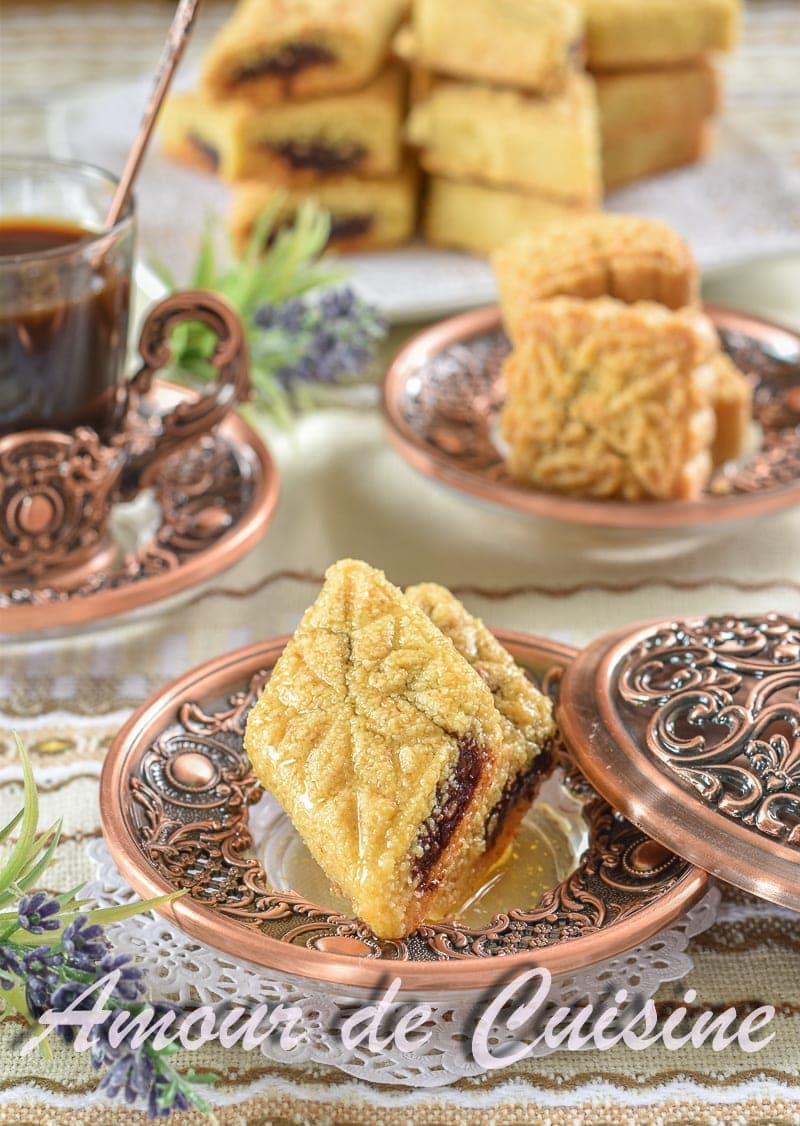
The Tradition of Algerian Baked Makrout (Makroud el Koucha)
Oven-baked Algerian makrout, or makroud el koucha, is a timeless pastry deeply rooted in North African tradition.
First crafted in Eastern Algeria, it quickly spread across the country, admired for its harmony of simplicity and refinement.
The dough, made with semolina, is carefully shaped to enclose a luscious filling of dates delicately spiced with cinnamon and cloves, then lightly perfumed with orange blossom water.
Its iconic diamond shape is more than beautiful, it ensures even baking and an elegant presentation.
Each bite offers a crisp golden crust giving way to a soft, fragrant center, evoking family gatherings, festive tables, and cherished traditions passed down through generations.
Known under different names: makrout, makroud, maqroudh, this pastry remains a symbol of Algerian hospitality.
Dipped in warm honey, it becomes an irresistible indulgence that keeps well for days, perfect for sharing with loved ones over mint tea or coffee.
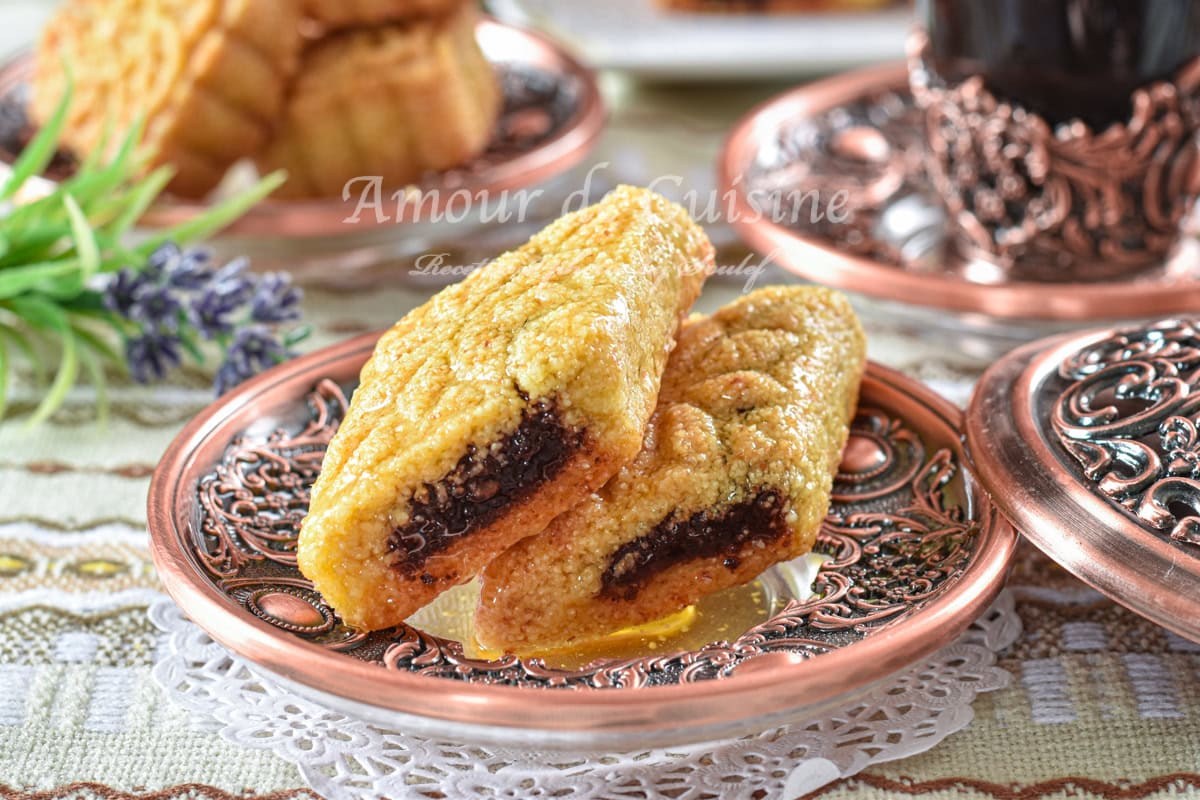
History and Origins of Algerian Makrout
Makrout has deep roots in the Maghreb, and more specifically in Algeria, where it is lovingly prepared for life’s most important occasions. Eid celebrations, weddings, and family gatherings are all moments when makrout shines as a true symbol of hospitality and tradition.
For an authentic version, I follow the method passed down by my grandmother from Constantine (East of Algeria), who mastered the art of this pastry.
Her recipe, preserved through generations, was so renowned that neighbors often asked her to prepare her famous makrout el koucha (oven-baked makrout) for their weddings.
I fondly remember the days leading up to Ramadan, when she would carefully prepare an enormous tray of baked makrout alongside another filled with baklawa.
These traditional Algerian pastries were essential to carry the family through the sacred month.
The trays themselves were not ordinary, they measured nearly one meter by 40 cm and were highly prized in Algeria.
Too large for a household oven, my grandmother would take them to the local baker, where they were baked to perfection.
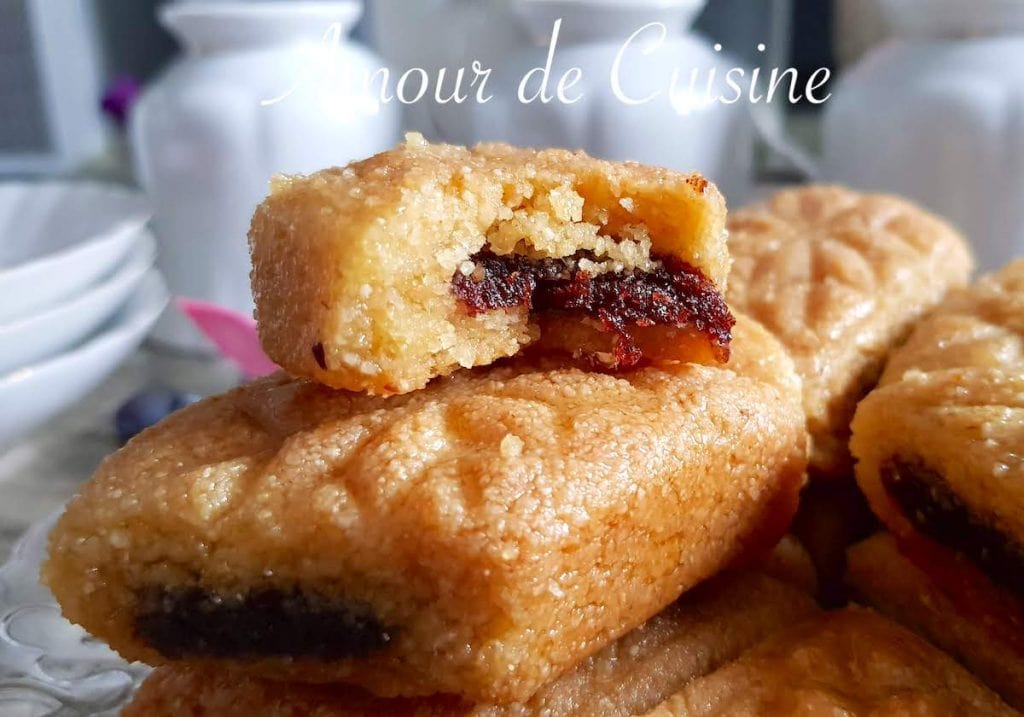
Ingredients for Perfect Baked Algerian Makrout (Soft and Crisp)
For the Dough
– 1200 g coarse semolina
Essential for the signature crumbly texture of makrout.
For best results, combine coarse and medium semolina. this prevents the pastry from being too dry or too firm.
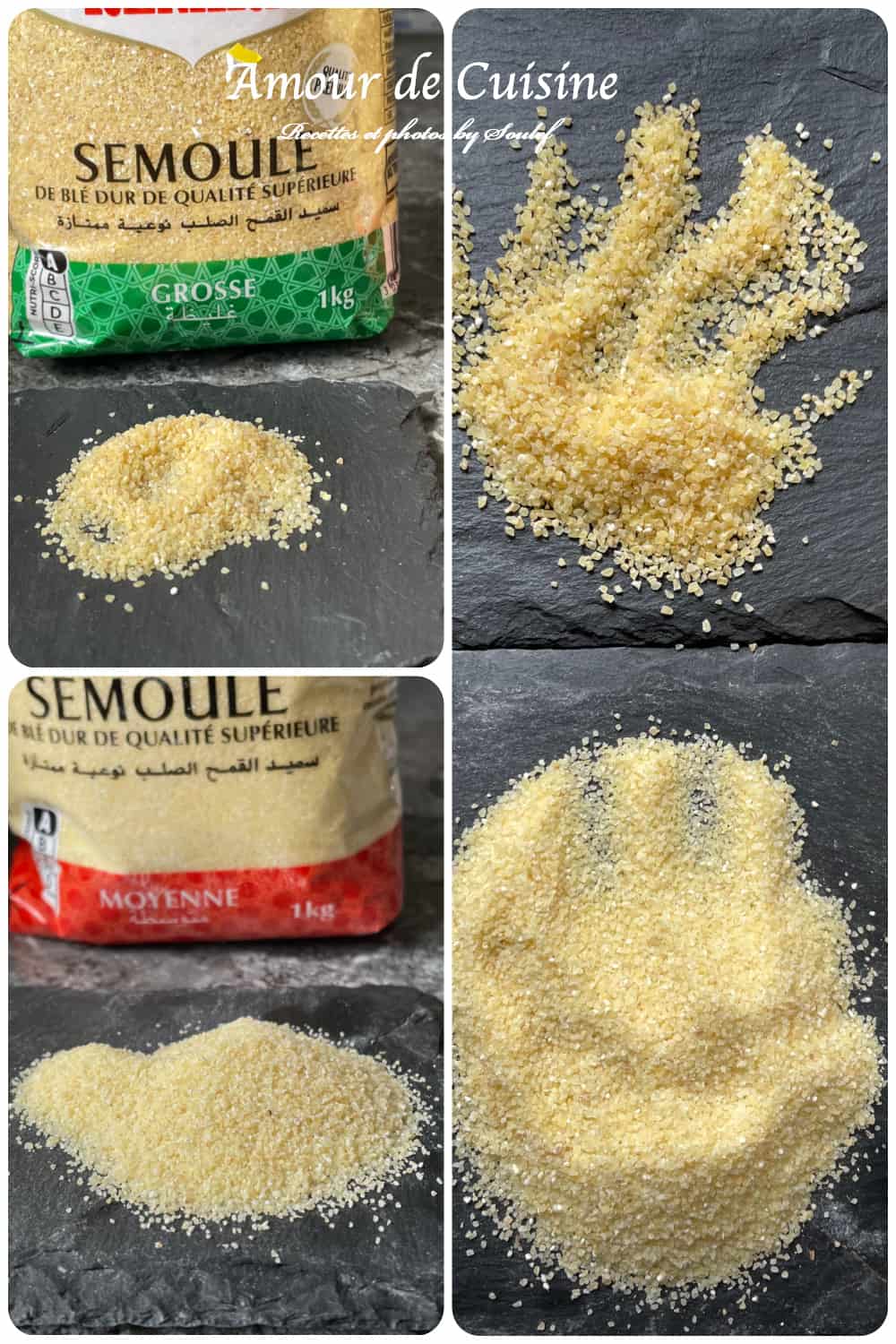
Note:
Coarse semolina is not couscous. Many people confuse the two, but couscous grains are pre-steamed and rolled, and will ruin the recipe.
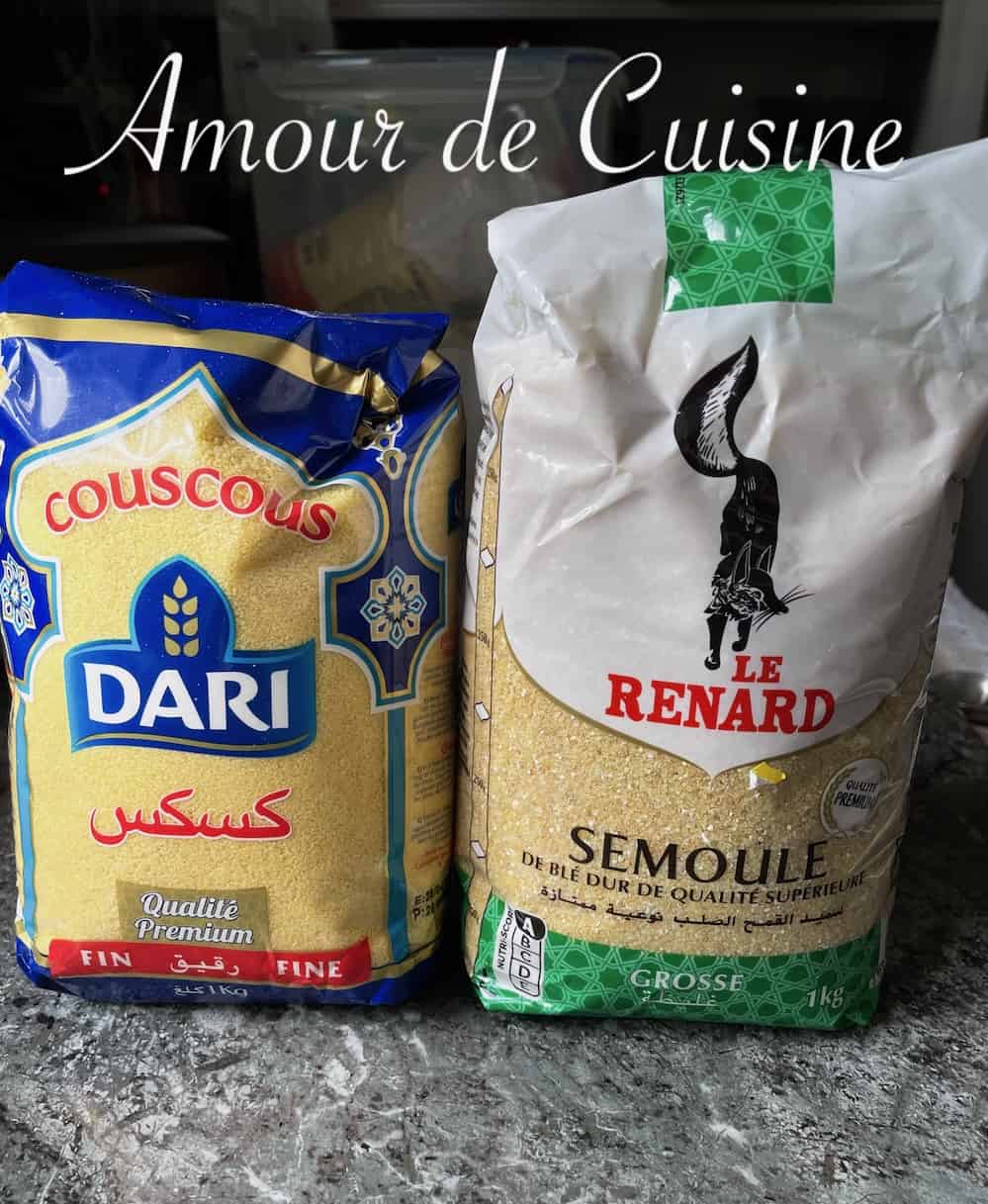
– 400 g ghee (smen or clarified butter)
This rich, aromatic fat coats the semolina and gives the dough its melt-in-the-mouth texture. Homemade ghee is ideal for the most authentic and balanced flavor.

– ½ teaspoon salt
Even in a sweet pastry, salt is essential. It enhances flavor and balances the richness of dates and honey.
– Water + orange blossom water
Used together to bind the dough without kneading, keeping the texture sandy and delicate. Orange blossom water adds the traditional floral fragrance of North African pastries.

For the Filling
– 500 g date paste
Choose ripe, soft, naturally sweet dates. You can prepare your own paste by washing, pitting, and grinding the fruit into a smooth consistency.
– ½ teaspoon ground cinnamon
Brings warmth and enhances the natural sweetness of the dates.
– ½ teaspoon ground cloves
Strong and aromatic, use sparingly to add depth and subtle spice to the filling.
– 2 teaspoons butter or ghee
Makes the filling softer, creamier, and easier to shape.
– 2 teaspoons jam (optional)
Fig jam is a great choice if the date paste is too dry. It softens the texture and enriches the flavor.
– Orange blossom water
Adds fragrance and helps keep the date paste pliable for easier shaping.
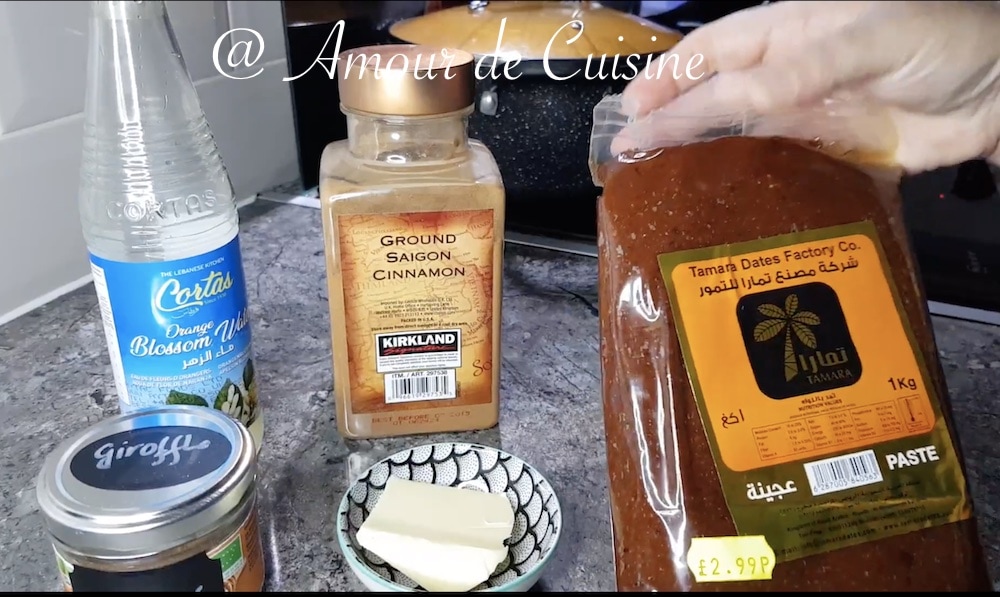
Step-by-Step Preparation of the oven baked makrout
Prepare the Filling
- Mix the date paste with cinnamon, cloves, butter (and jam if needed).
- Knead until smooth and supple.
- Roll into logs about 15 cm long and 3 cm thick. Set aside.
Prepare the Dough
- Place semolina and salt in a large bowl. Mix well.
- Make a well in the center, pour in the melted ghee, and rub through the semolina until fully absorbed.
- Let the mixture rest for at least 2 hours so the semolina soaks up the fat.
- Gradually moisten with water mixed with orange blossom water. Combine lightly with fingertips, without kneading, until a compact ball forms.
- Cover with cling film and let rest.

Shape the Makrout
- Take a portion of dough and roll into a log.
- Press a groove along the length with your finger.
- Insert a date log into the groove and pinch the dough to seal over the filling.
- Roll gently into a smooth log about 2 cm thick.
- Press lightly with a patterned mold or tool to imprint a design.
- Cut into diamonds and arrange closely on a baking tray so the filling won’t dry or caramelize.
Bake the Makrout
- Preheat the oven to 175°C (350°F).
- Bake for about 30 minutes, until evenly golden top and bottom.
- Start with lower heat, then switch to upper heat if needed for even browning.
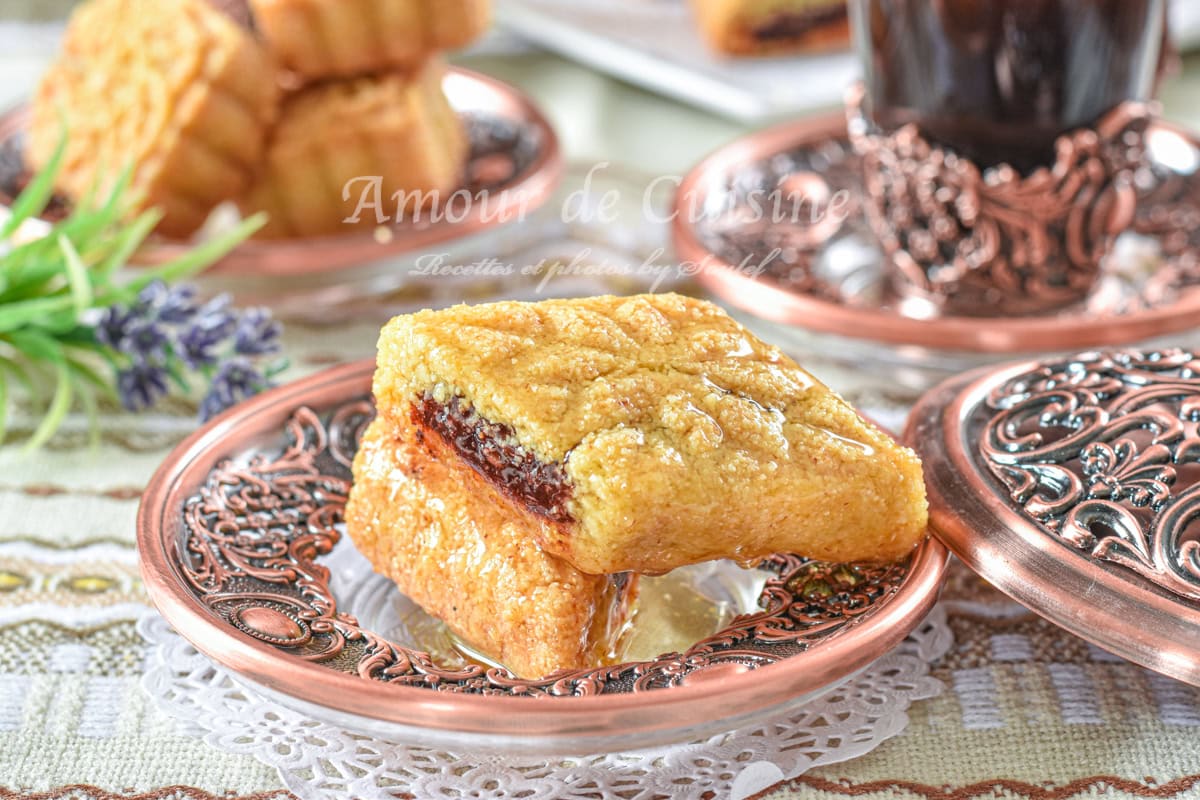
Shaping and Baking Tips for Perfect Algerian Baked Makrout
Once your makrout are shaped, arrange them in a baking dish with slightly raised edges, placing them snugly against one another.
This simple but essential step prevents the date filling from drying out or caramelizing during baking.
Pay special attention to the pieces at the edges: always cover any exposed filling with a bit of dough so it doesn’t harden.
This small precaution makes all the difference, ensuring a tender, well-balanced result.
Extra Tips for Success
- Experiment with variations : Add almonds, walnuts, or even fig paste to the filling for a unique twist.
- Use semolina, not couscous grains : Couscous is pre-steamed and rolled, making it unsuitable for this dough.
- Rest the semolina in ghee before adding liquid : This step is key to achieving the crumbly, melt-in-the-mouth texture.
- Avoid kneading the dough : Mix lightly with your fingertips to prevent gluten formation, which would make the makrout tough.
- Keep the logs close together on the tray : This protects the filling and ensures even baking.
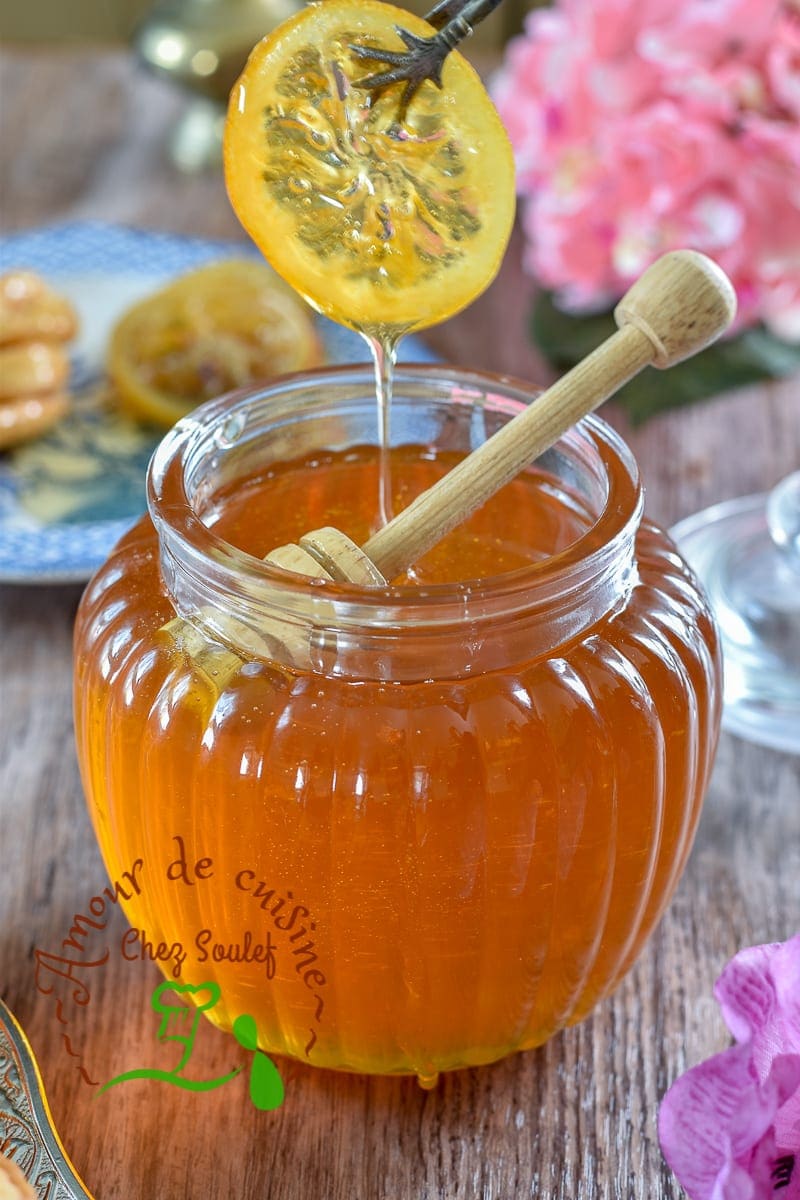
Storage and Serving Tips for Makrout
– Keep the filling soft: Makrout stores best when the date filling is supple and well-prepared.
– Short-term storage: Place the pastries in an airtight container and keep them in a cool, dry place. They will stay fresh and tender for several days.
– For longer storage: Freeze the makrout before soaking them in honey. When ready to serve, reheat gently in the oven, then dip into warm syrup to bring back their flavor and crispness.
– Best way to serve: Only dip makrout in warm, fragrant honey just before presenting them. This keeps the texture perfect, crispy on the outside, soft inside.
– Enjoy plain or glazed: Some people even prefer them without honey, as the natural balance of semolina and dates is already delicious.
– Pairings: Serve with mint tea or strong oriental coffee for a warm and festive touch.
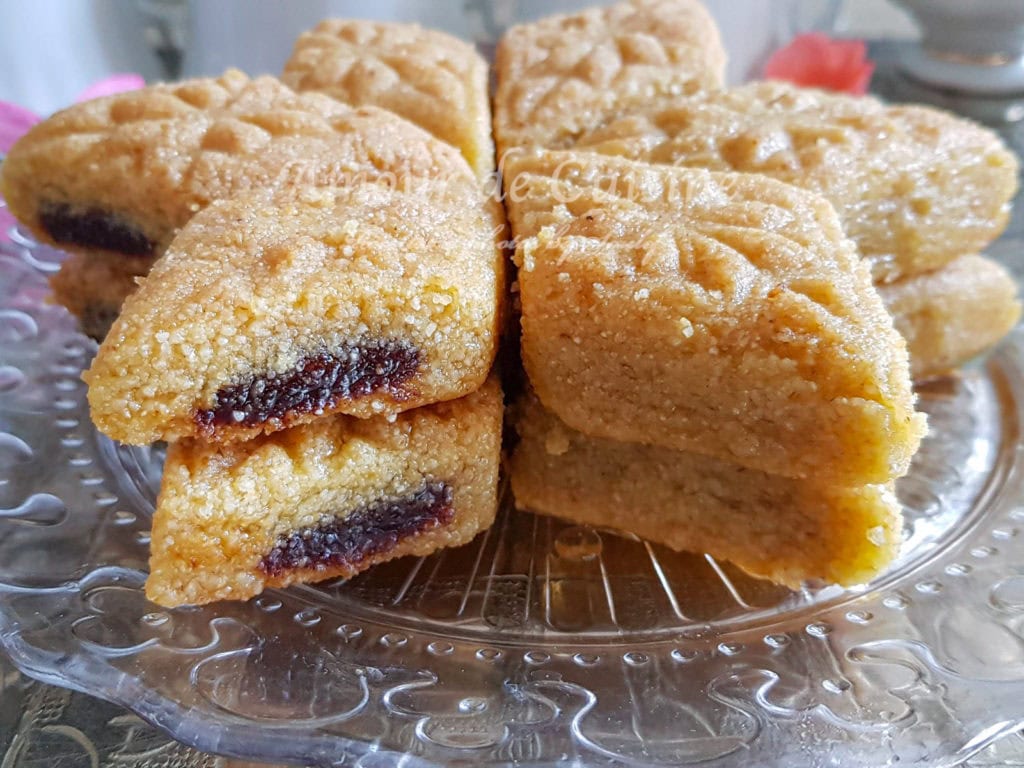
Baked Makrout Recipe in Video
Here’s a step-by-step video to guide you through making makrout easily at home. I hope it will be really helpful for you!
Please note: in the video, when showing the ingredients, I mistakenly say coarse semolina and fine semolina.
When adding them to the mixer, I also say coarse and fine.
The correct measure is actually coarse semolina and medium semolina, not fine.
FAQ: Common Problems and Solutions for Perfect Makrout
– My dough won’t come together
This usually happens due to poor semolina quality or too much water. Use a mix of coarse and medium semolina, and add water gradually with your fingertips, without kneading.
– My makrout cracks while baking
Often caused by dough that’s too dry or overworked (developing gluten). Add a little more orange blossom water or let the dough rest longer before shaping.
– The honey doesn’t soak in properly
The syrup should be warm, and the makrout slightly warm when dipped. For best results, soak in two steps: a quick dip, then a longer soak before serving.
– What’s the ideal oven temperature?
175°C (350°F) works best, hot enough to brown evenly without drying. Watch the color and adjust top/bottom heat depending on your oven.
– My makrout is too crumbly and falls apart
This happens if only coarse semolina is used. Mix coarse and medium semolina for a crumbly yet stable dough.
– The date filling hardens after baking
The paste was too dry. Always enrich it with a little butter or ghee, and if needed, add a spoonful of jam to keep it soft.
Other Pastries to try
- Strawberry Jam Shortbread Cookies : sablé sandwich
- No bake chocolate and peanuts bites dessert : bniwen
- Italian Cantuccini (Biscotti) with Almonds and Pistachios
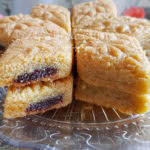
Oven-baked Algerian Makrout recipe : Makroud el Koucha
- Total Time: 1 hour 45 minutes
- Yield: 100 pieces 1x
Description
Oven Baked makrout is more than just a pastry, it’s a celebration of Algerian tradition for everyday tea times and festive tables. Whether you choose the baked or fried version, each diamond-shaped piece carries the taste of heritage, care, and togetherness.
Ingredients
Ingredients for the Dough
- 1200 g coarse semolina : Not too coarse; this gives the dough its crumbly, sandy texture.
- 400 g ghee (smen or clarified butter) : Adds richness and helps bind the semolina.
- A pinch of salt : Essential to balance the sweetness and enhance flavour.
- Orange blossom water : Provides a delicate floral fragrance.
- Water : Used with orange blossom water to bring the dough together.
Ingredients for the Filling
- 500 g date paste : Soft and sweet, forms the heart of the makrout.
- ½ teaspoon ground cinnamon : Adds warmth and a comforting aroma.
- ½ teaspoon ground cloves : Strong in flavour, so use sparingly for depth.
- 2 teaspoons butter : Softens the filling and makes it more workable.
- 2 teaspoons jam (optional) : Useful if the date paste is poor quality or too dry; fig jam keeps the filling soft during baking.
- Orange blossom water : Loosens and perfumes the date paste for a smooth, fragrant filling.
Instructions
Preparing the Makrout Filling
-
Mix the date paste with the spices, butter, and flavoring until you get a smooth, pliable ball.
-
Roll into logs about 15 cm long and 3 cm thick. Set aside.
Preparing the Makrout Dough
-
In a large bowl, combine the semolina and salt.
-
Make a well in the center and pour in the melted clarified butter. Mix well so the semolina fully absorbs the fat.
-
Let rest for at least 2 hours to allow the semolina to soak.
-
Gradually moisten with a mixture of water and orange blossom water. Combine gently with your fingertips, without kneading, to avoid gluten development.
-
Form into a compact ball, cover with cling film, and leave to rest.
Shaping the Makrout
-
Take a portion of dough and roll into a log.
-
Using your index finger, create a groove along its length.
-
Place a smaller log of date paste inside the groove.
-
Gently fold the dough over to seal the filling.
-
Roll again to form an even log about 2 cm thick.
-
Use a patterned mold or tool to press lightly on top and create a decorative design.
-
Cut into diamonds and arrange them snugly in a baking dish so the filling doesn’t burn.
-
Repeat until all the dough and filling are used.
Baking the Makrout
-
Preheat the oven to 175°C (350°F).
-
Bake for about 30 minutes, until golden brown on both the top and bottom.
-
Monitor the baking: start with lower heat, then switch to top heat at the end for even browning.
- Prep Time: 45 min
- Cook Time: 1 hour
- Category: pastry, dessert
- Cuisine: algerian cuisine
Nutrition
- Serving Size: 1 portion
- Calories: 80 kcal